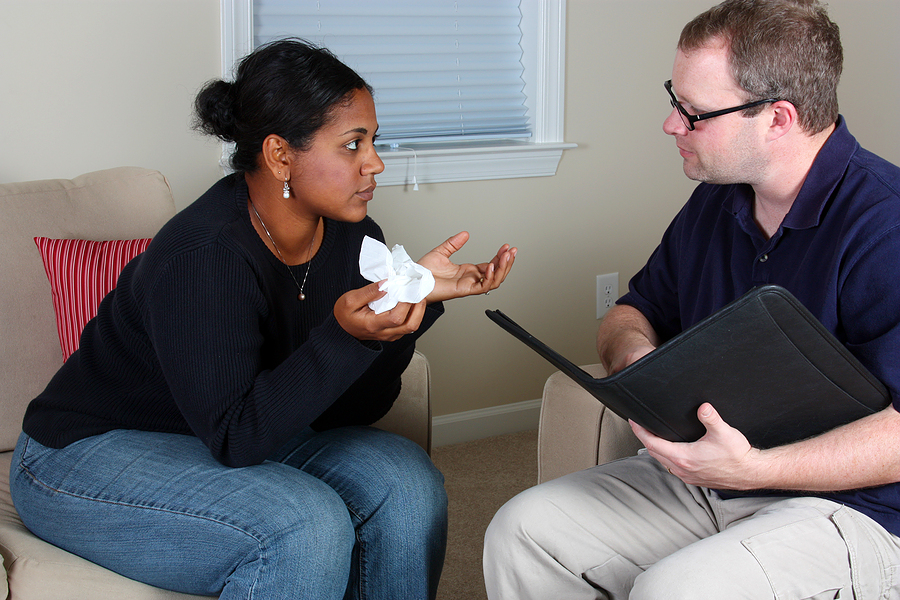
Borderline Personality Disorder
What is Borderline Personality Disorder?
Borderline Personality Disorder is the most common Personality Disorder affecting approximately 7 in every 1000 people, this is just under 1% of the population. Some studies suggest it can effect up to 2% but due to the nature of the illness it can be under-diagnosed.
 People with borderline personality disorder (BPD) are characterised as being insecure in themselves and their relationships, impulsive, prone to mood swings and erratic behaviours. Sufferers tend to see things as very black or white and experience extremes in emotion and behaviour. Typically emotional instability will affect people with BPD and often this creates turbulent relationships and a rollercoaster emotional life. As BPD affects a person’s view of liability, it can manifest itself in destructive behaviours such as sexual promiscuity and gambling, sufferers commonly self harm. BPD can cause a distorted and unstable view of ones self and a chronic fear of abandonment, sufferers may go to great lengths to avoid being abandoned.
People with borderline personality disorder (BPD) are characterised as being insecure in themselves and their relationships, impulsive, prone to mood swings and erratic behaviours. Sufferers tend to see things as very black or white and experience extremes in emotion and behaviour. Typically emotional instability will affect people with BPD and often this creates turbulent relationships and a rollercoaster emotional life. As BPD affects a person’s view of liability, it can manifest itself in destructive behaviours such as sexual promiscuity and gambling, sufferers commonly self harm. BPD can cause a distorted and unstable view of ones self and a chronic fear of abandonment, sufferers may go to great lengths to avoid being abandoned.
Who does Borderline Personality Disorder effect?
It has been estimated that three-quarters of those with BPD are women. Symptom onset typically occurs in adolescence or young adulthood, though diagnosis is usually made once a patient reaches adulthood. This is because a person’s personality is not seen as ‘fully formed’ until this time and BPD is typically diagnosed after one year of symptoms being present.
People with BDP often have comorbid (occurring at the same time) conditions such as:
- Depression
- Anxiety
- Eating Disorders
- Substance Misuse(e.g. drugs or alcohol)
- Other Personality Disorders
Behaviours often present in BPD
- Self-damaging behavior
- Chronic fear of abandonment (which can lead to disturbed behavior within a relationship)
- Poor impulse control (reckless or self damaging sex, spending, drugs)
- Interpersonal relationship problems (Jealousy erratic behavior, possessiveness)
- Splitting – switching between love/hate – idealizing/demonizing someone (often swinging from one to the other)
- Bouts of depression
- Bouts of psychosis,
- Self-harm and suicidal thoughts, intentions, even attempts
- Paranoia
- Addictions
- Mood swings (either very high in mood or very low)
- Uncontrollable anger
- No real sense of self, sexuality confusion, swings in life direction/dreams (this can lead to swings in sexuality/relationships, jobs)
- Black and white thinking
Causes of Borderline Personality Disorder
The causes of BPD are somewhat undetermined, but there are factors that seem to increase the likelihood of the condition.
Childhood Abuse:
Studies have found that those with BPD are more likely to have experienced abuse or trauma during childhood, especially child sexual abuse. It has been found that those who have experienced abuse during their formative years are at significantly higher risk of developing borderline personality disorder.
Neglect:
Children who experience neglect are at greater risk of developing BPD. If someone has had their physical and/or emotional needs neglected by a caregiver as a child, this has been seen to increase the risk of attachment issues and increase the likelihood of BPD. Those with Borderline Personality disorder often reported that as a child their feelings were ignored and/or they were made to feel invalid.
Kernberg Theory:
Renowned psychoanalyst Otto Riedmann Kernberg formulated a theory of borderline personality based on a premise of failure to develop in childhood. Kernberg’s developmental model suggests that the failure to achieve important developmental tasks can results in an increased risk to develop a borderline personality.
This example can be seen in Kayla Kavanagh’s personal testimony of BPD where she writes ‘It felt like I had got ‘stuck’ at age 11 when the problems began, and that my body and mind were developing but my sense of self and capacity to regulate emotion lagged way behind’
Genetics:
Existing studies are not altogether conclusive, however one study on twins found that if one twin met criteria for BPD then the other was found to meet these criteria in 35% of cases – a much higher prevalence than in the general population, thus implying a strong genetic link. Other studies have suggested this link to be only a modest precursor to BPD.
Borderline Personality Disorder treatments
As personality disorders are relatively ‘new’ in terms of classification as a ‘mental illness’ treatment and management are constantly being monitored and improved. Now the outlook for those with the condition is good with 86% expected to be in remission 10 years after treatment. Every individual should be assessed as to their own needs.
Psychotherapy/Talking therapy
Those diagnosed with BPD should expect psychotherapy to form the foundation of their care. A number of therapeutic techniques have shown to be helpful in the treatment of BPD, these commonly include Cognitive Behavioural Therapy (CBT), Psychodynamic Counselling and more recently Dialectical Behaviour Therapy (DBT) which is proving very successful – please see our page on Borderline Personality Treatments for more information.
Medication that can be prescribed for Borderline Personality Disorder
Medications may be prescribed to reduce particular symptoms of BPD, symptoms such as anxiety, paranoia or depression. There are no psychiatric drugs specifically for BPD but a patient’s symptoms, behavior, medical history and any comorbid conditions will be assessed and medications such as antipsychotics, antidepressants, omega-3 fatty acids and mood stabilisers such as lithium may be deemed appropriate in some cases. To find out more about the medication options for those with BPD please see out treatments page.
Stigma attached to Borderline Personality Disorder
Because of the lack of awareness about the condition, those with BPD can often be looked upon as ‘attention seeking’ and their erratic behaviour is often misunderstood or misinterpreted. This can make them more difficult to treat. Unfortunately the view that a BPD sufferer’s self abusive behavior is ‘acting out’ or not to be taken seriously often leads a sufferer into further isolation and personal conflict. One in Ten people with BPD will successfully complete suicide.
Further help on Borderline Personality Disorder
We hope you have found this information useful, please also see the guides below on more about the symptoms of and treatment of this disorder, and much more besides.

















